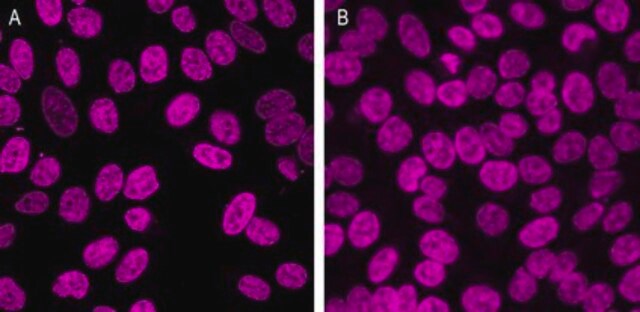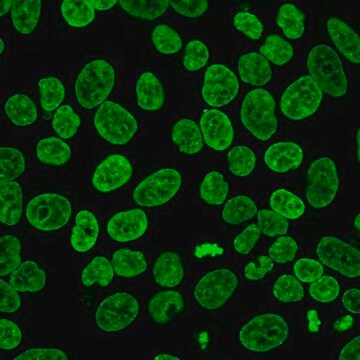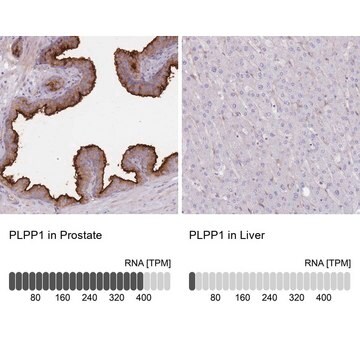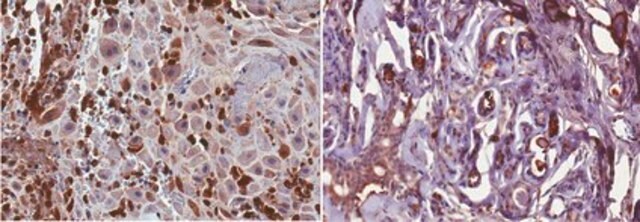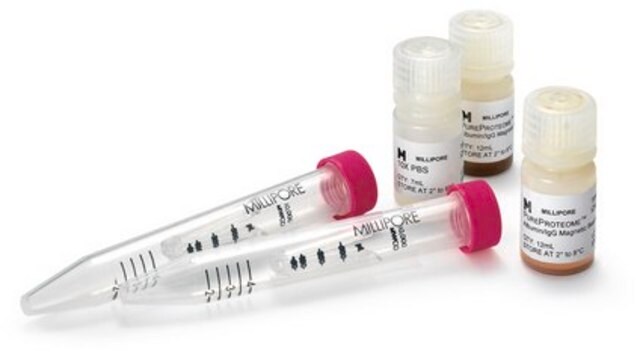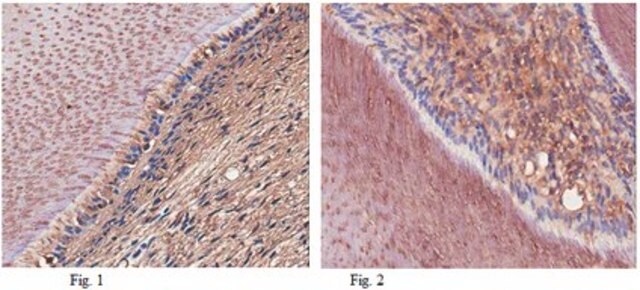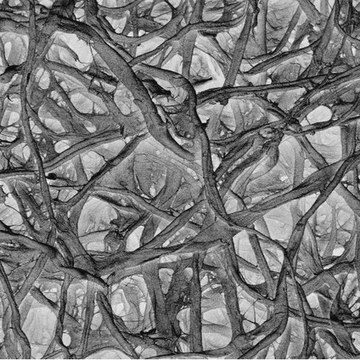MABS1220
Anti-LTP/CETP Antibody, clone 14–8F
clone 14-8F, from mouse
Synonym(s):
Cholesteryl ester transfer protein, CETP, Lipid transfer protein I, LTP
About This Item
Recommended Products
biological source
mouse
Quality Level
antibody form
purified immunoglobulin
antibody product type
primary antibodies
clone
14-8F, monoclonal
species reactivity
mouse, human, rabbit
technique(s)
ELISA: suitable
western blot: suitable
isotype
IgG2aκ
UniProt accession no.
shipped in
wet ice
target post-translational modification
unmodified
Gene Information
human ... CETP(1071)
General description
Specificity
Immunogen
Application
ELISA Analysis: A representative lot was conjugated with HRP and used as the detection antibody in combination with clone 3-11D (Cat. No. MABS1219) as the capture antibody for the detection of mouse plasma LTP/CETP by sandwich ELISA (Wu, C.A., et al. (2002). Arterioscler .Thromb. Vasc. Biol. 22(8):1347-1353).
ELISA Analysis: A representative lot, when conjugated with HRP and used as the detection antibody, showed pH-dependent LTP/CETP-binding activity with the maximum reactivity at a weakly acidic condition of pH 5 to 5.5 in sandwich ELISA applications (Saito, K., et al. J. Lipid Res. (1999). 40(11):2013-2021).
Western Blotting Analysis: A representative lot detected both rabbit and human LTP/CETP by Western blotting under either reducing or non-reducing condition (Ko, K.W., et al. (1994). J. Biol. Chem. 269(45):28206-28213).
Inhibits Activity/Function: A representative lot inhibited both rabbit and human LTP/CETP-mediated triglyceride (TG), but not cholesteryl ester (CE), transfer from low density lipoprotein (LDL) to high density lipoprotein (HDL) (Ko, K.W., et al. (1994). J. Biol. Chem. 269(45):28206-28213).
Inhibits Activity/Function: A representative lot effectively inhibited human LTP/CETP-mediated triglyceride (TG) transfer from high density lipoprotein (HDL) to to apoB-containing lipoproteins in human plasma. Clone 14-8F (14-8H) also inhibited cholesteryl ester (CE) transfer in the same assay by 40% (Ko, K.W., et al. (1994). J. Biol. Chem. 269(45):28206-28213).
Signaling
Lipid Metabolism & Weight Regulation
Quality
Western Blotting Analysis: 0.5 µg/mL of this antibody detected purified human plasma LTP/CETP.
Target description
Physical form
Storage and Stability
Other Notes
Disclaimer
Not finding the right product?
Try our Product Selector Tool.
Storage Class Code
12 - Non Combustible Liquids
WGK
WGK 1
Flash Point(F)
Not applicable
Flash Point(C)
Not applicable
Certificates of Analysis (COA)
Search for Certificates of Analysis (COA) by entering the products Lot/Batch Number. Lot and Batch Numbers can be found on a product’s label following the words ‘Lot’ or ‘Batch’.
Already Own This Product?
Find documentation for the products that you have recently purchased in the Document Library.
Our team of scientists has experience in all areas of research including Life Science, Material Science, Chemical Synthesis, Chromatography, Analytical and many others.
Contact Technical Service

